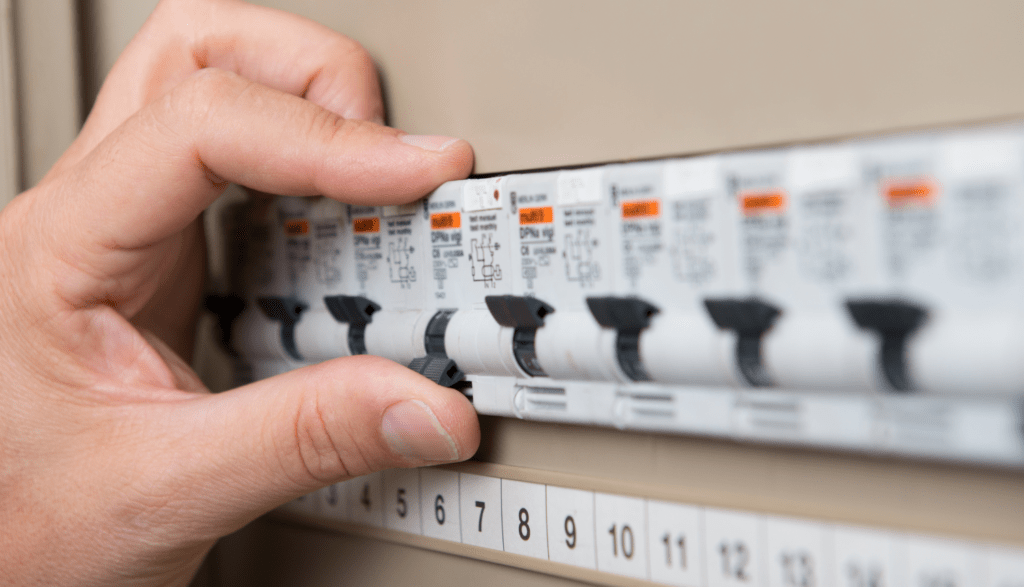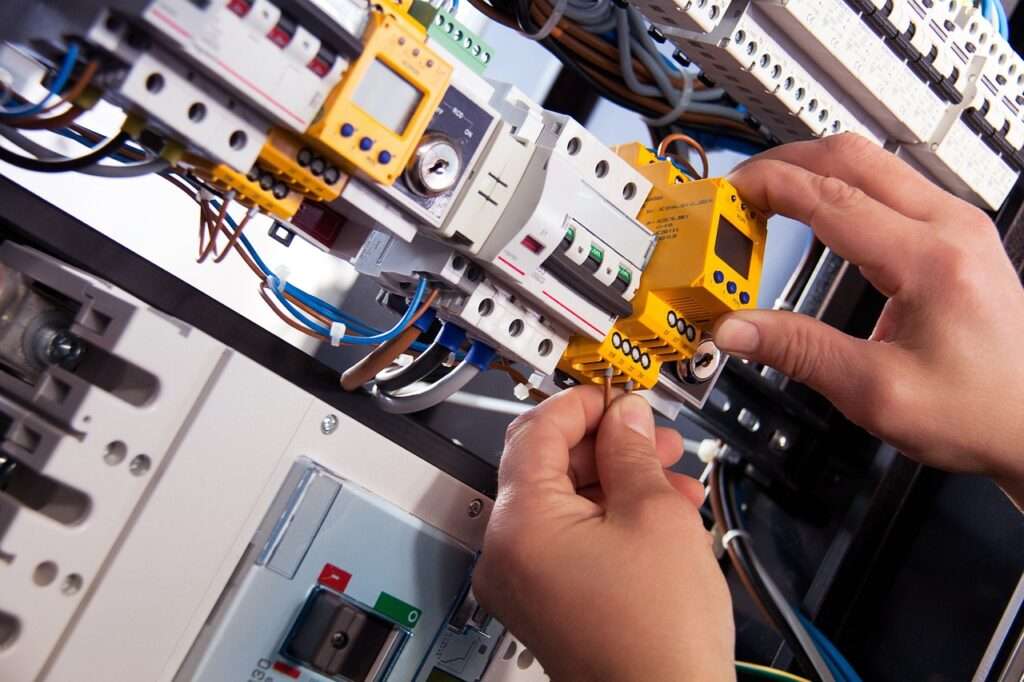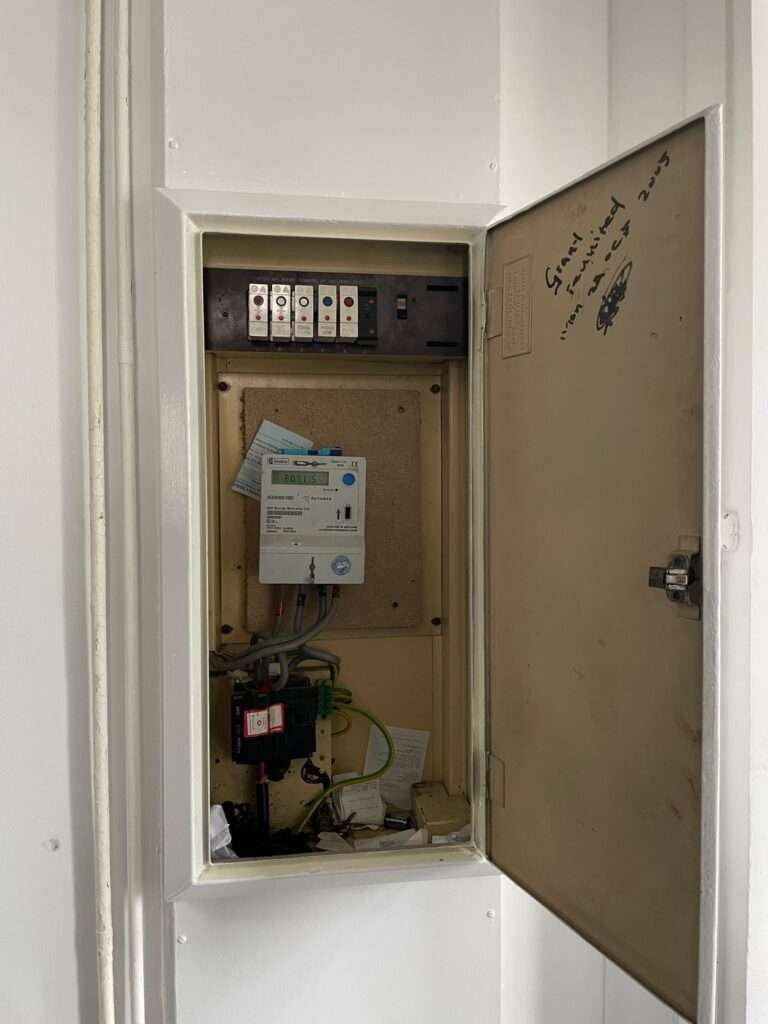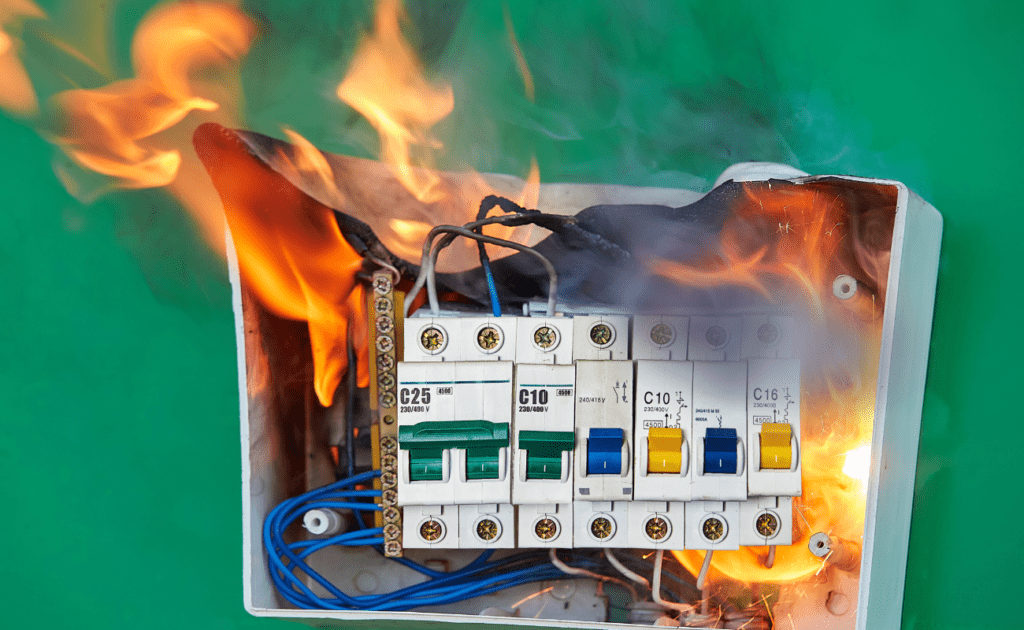Welcome to our comprehensive guide on fuse box consumer units! If you’re a homeowner, it’s essential to understand the importance of a well-maintained and updated electrical system, and your consumer unit plays a significant role in this. In this section, we’ll provide an overview of what a fuse box consumer unit is, why it’s essential, and the functions it serves in protecting your electrical circuits. By the end, you’ll have a better understanding of why modernizing your fuse box is crucial for the safety and efficiency of your home’s electrical system.
Upgrading Your Fuse Box: Why It Matters
Are you still relying on an old fuse box to keep your home’s electrical circuits safe? Upgrading to a modern consumer unit is an essential step towards electrical safety.
Old fuse boxes are not equipped to handle the power demands of modern homes and electrical systems. They lack the safety features necessary to protect against electrical hazards and fires. Replacing your outdated fuse box with a modern electrical consumer unit can significantly enhance your home’s safety and protect against electrical hazards.
Benefits of a Modern Fuse Box
A modern consumer unit comes equipped with advanced safety features, such as Residual Current Devices (RCDs) and Miniature Circuit Breakers (MCBs). These features work together to detect electrical faults and promptly shut off power to prevent hazardous situations.
RCDs offer an added layer of protection by monitoring the electrical current and shutting off power if it detects any abnormalities. MCBs, like fuses, act faster and are resettable after tripping. These safety features help prevent electrical fires, electrocutions, and other electrical hazards.

When to Replace Your Old Fuse Box
If you have an old fuse box that has not been upgraded in the last decade, it’s time for a replacement. Signs of an outdated fuse box include flickering lights, tripping breakers, and buzzing sounds. These symptoms indicate that your fuse box is struggling to keep up with the demands of your home’s electrical systems.
Replacing an old fuse box is not a DIY project. It’s crucial to hire a qualified electrician for this task. They can assess your electrical needs, help you choose the right consumer unit, and ensure proper installation.
Don’t Compromise on Electrical Safety
Upgrading your fuse box may seem like an unnecessary expense, but it’s a crucial step towards ensuring the safety of your home and your family. For assured electrical safety, upgrade your fuse box today to guard against hazards.
Understanding Consumer Unit Components
A consumer unit, also known as a circuit breaker box, is responsible for protecting electrical circuits from damage by breaking electrical supply in the event of an overload. It is the modern version of a fuse box, and it is vital to ensuring electrical safety in your home or business.
The consumer unit consists of several components that work together to protect the electrical circuits. These include circuit breakers, RCDs (Residual Current Devices), and MCBs (Miniature Circuit Breakers).
Circuit Breakers
Circuit breakers are designed to break the electrical supply if the current exceeds the limit for that circuit. This prevents damage to electrical appliances and reduces the risk of electrical fires.
There are different types of circuit breakers, including:
| Type of Circuit Breaker | Use |
|---|---|
| Single-pole circuit breakers | Used for 120-volt circuits, such as lighting and wall outlets. |
| Double-pole circuit breakers | Used for 240-volt circuits, such as ovens and air conditioning units. |
RCDs (Residual Current Devices)
RCDs are designed to provide protection against personal electric shock and fire caused by faulty wiring or appliances. They monitor the electrical current flow and break the circuit if an imbalance is detected. This provides a critical safety function as they can detect currents as small as 30mA.

MCBs (Miniature Circuit Breakers)
MCBs are a type of circuit breaker that can trip instantly when an overload occurs. They replace the older style fuses and offer more precise protection for electrical circuits. MCBs also have the advantage of being resettable after a tripping event.
Understanding these components is crucial in ensuring the safety of electrical systems in your home or business. Always remember to hire a licensed professional electrician for any electrical work, including consumer unit installation and upgrades.
Installing a New Consumer Unit
If you have decided to upgrade your old fuse box to a modern consumer unit, it is important to do so correctly to ensure safety and proper functioning. Here are the steps involved in installing a new consumer unit:
| Step | Description |
|---|---|
| Step 1 | Choose an appropriate location for the new consumer unit, one that is easily accessible and well-ventilated. |
| Step 2 | Turn off the electricity supply to the property. |
| Step 3 | Remove the cover from the old fuse box. |
| Step 4 | Disconnect the wiring from the old fuse box and remove it from the wall. |
| Step 5 | Connect the wiring to the new consumer unit, following the manufacturer’s instructions and any applicable building codes. |
| Step 6 | Mount the new consumer unit to the wall. |
| Step 7 | Replace the cover on the new consumer unit. |
| Step 8 | Turn the electricity supply back on and test the new consumer unit to ensure proper functioning. |
It is important to hire a professional electrician to install a new consumer unit, as working with electricity can be dangerous and mistakes can have serious consequences. By hiring a professional, you can ensure that the installation is done correctly and safely.
Replacing an Old Fuse Box: When and How
Replacing an old fuse box with a modern consumer unit is essential for maintaining the safety of your electrical system. But when should you replace an old fuse box, and how do you go about doing it? Here’s what you need to know:

When should you replace an old fuse box?
If your home still has an old fuse box, it’s likely that it’s outdated and no longer meets modern electrical safety standards. Here are some signs that you should replace it:
- The fuse box has a wooden back, cast iron switches, or a mixture of fuses.
- The fuse box is over 25 years old.
- You plan to add new appliances or electrical circuits to your home.
- You experience frequent power outages or blown fuses.
If you notice any of these signs, it’s time to consider replacing your old fuse box with a modern consumer unit.
How do you replace an old fuse box with a modern consumer unit?
Replacing an old fuse box with a modern consumer unit is a complex process that should only be done by a professional electrician. Here are the general steps involved in the replacement process:
- Turn off the power supply to your home.
- Remove the cover from your old fuse box.
- Disconnect the old wiring from the fuse box.
- Remove the old fuse box and mount the new consumer unit.
- Connect the new wiring to the consumer unit.
- Test the new consumer unit and restore power to your home.
While online guides for fuse box replacement exist, self-installation isn’t recommended. Only a qualified electrician should perform this task to ensure the safety and proper functioning of your electrical system.
Safety Measures for Fuse Box Consumer Units
When it comes to electrical safety, it’s important to take precautions with fuse box consumer units. By following these safety measures, you can help avoid potential hazards and ensure the optimal functioning of your electric system:
- Regular inspections: Inspect your fuse box consumer unit regularly to ensure there aren’t any loose connections, damaged components, or other signs of wear and tear. If you notice anything unusual, contact a professional electrician to inspect the unit and make any necessary repairs.
- Avoid overloading circuits: Be mindful of how many electrical devices you are using at once. Overloading circuits can cause damage to your consumer unit and create a potential fire hazard.
- Know how to reset tripped breakers: If a circuit breaker trips, be sure to turn off the device causing the overload, and then reset the breaker by flipping it back to the ON position. If you’re unsure of how to do this, refer to your user manual or contact an electrician.
- Keep the area around the consumer unit clear: Make sure there are no obstructions in the area surrounding your consumer unit, as this can impede air circulation and create a potential fire hazard.
By adhering to these safety measures, you can help ensure the longevity and safety of your fuse box consumer unit. Remember, if you ever have any questions or concerns, don’t hesitate to contact a professional electrician for assistance.
Common Issues with Fuse Box Consumer Units
Even with the best maintenance and care, issues can arise with fuse box consumer units. Here are some common issues that homeowners might face:
| Issue | Cause | Solution |
|---|---|---|
| Circuit Overloads | Using too many electrical devices at once, or connecting high-wattage appliances to a single circuit. | Unplug some devices, or redistribute them to different circuits. Consider hiring an electrician to install additional circuits. |
| Tripping Breakers | Breakers can trip when they detect a fault in the circuit. This can be caused by a range of issues, including overloaded circuits, short circuits, or ground faults. | Identify the cause of the fault, and take appropriate action. Resetting the breaker once will usually solve the issue, but if it happens frequently, consult an electrician to investigate the underlying problem. |
| Faulty Components | Circuit breakers, MCBs, and RCDs can become damaged over time, often due to wear and tear or exposure to external factors such as moisture or heat. | Replace the faulty component. This should only be done by a qualified electrician. |
It’s important to address any issues with your fuse box consumer unit promptly, as they can lead to serious electrical hazards. If you’re unsure how to troubleshoot an issue, or if you’re not comfortable working with electrical systems, it’s best to seek the assistance of a professional electrician.
Maintenance and Care Tips for Fuse Box Consumer Units
A consumer unit is an essential component of any electrical system that requires proper care and maintenance to ensure optimal performance and safety. Here are some tips to keep your fuse box consumer unit in top shape:
1. Keep it clean
Regular cleaning of your consumer unit is essential to prevent dust and debris buildup. This buildup can cause the unit to overheat and malfunction, leading to potential electrical hazards. Use a dry cloth to wipe the exterior of the unit and avoid using any liquid cleaners.
2. Check for loose connections
Loose connections can cause the unit to overheat and potentially start a fire. It’s essential to check the connections periodically to ensure that they’re tight and secure. If you notice any loose connections, turn off the power and tighten them immediately.
3. Schedule regular electrical inspections
Regular electrical inspections conducted by a qualified electrician can help identify and resolve potential issues before they turn into major problems. Have a professional inspect your consumer unit at least once a year to ensure that it’s functioning optimally.
4. Avoid overloading circuits
Overloading circuits can cause your consumer unit to trip and potentially result in electrical hazards. Spread out your electrical usage and avoid plugging multiple high-draw appliances into the same circuit.
5. Keep the area around the unit clear
Avoid storing any flammable materials near the consumer unit. Keep the area around it clean and clear to prevent any potential fire hazards.
By following these maintenance and care tips, you can ensure that your fuse box consumer unit is functioning optimally and is safe for use.
Get rid of your old consumer unit and keep your family safe
Get in contact and we can offer you a price quotation over the phone for replacement of your old consumer unit.
5 STAR Reviews
Great Experience
Very professional! Would definitely recommend! Mike easily solved the problem that others couldn’t do. Thank you!
~Karina P.
LOVE IT
Anthony took great care to research exactly what the job would require prior to the engineer’s visit the following day. Consequently my oven repair was wrapped up in less than an hour.
~ Dom Richards
Extremely Professional
Mike is great! Extremely professional, knowledgeable, punctual and very helpful. I would highly recommend him!
~Lina R
Frequently Asked Questions about Fuse Box Consumer Units
Here are some frequently asked questions and answers that may help you understand your fuse box consumer unit:
What is a fuse box consumer unit?
A fuse box consumer unit is a vital component of your electrical system that houses and controls the distribution of electricity throughout your home. It contains fuses, circuit breakers, RCDs, and MCBs, which protect your electrical circuits from damage and electrical fires.
Why do I need to upgrade my old fuse box?
Upgrading your old fuse box to a modern consumer unit is crucial for maintaining your electrical safety. Old fuse boxes can fail to trip during a power surge, leading to electrical fires or electric shocks. A new consumer unit includes safety features like RCDs and MCBs that auto-cut power during faults.
How can I tell if I need to replace my old fuse box?
If you have an old fuse box, it’s important to check for signs of wear and tear, such as burn marks, cracks, or signs of rust. If your fuses frequently blow, or if you notice dimming lights or flickering, it may be time for a replacement. It’s always recommended to seek professional advice from a licensed electrician.
Can I install a new consumer unit myself?
No, you should never attempt to install a new consumer unit yourself. Electrical work can be extremely dangerous, and only a licensed electrician should carry out the installation. It’s essential to ensure that your consumer unit is installed correctly to avoid any electrical hazards.
How often should I check my consumer unit?
You should aim to check your consumer unit at least once a year. IHire a licensed electrician for inspections to preemptively address potential issues. You should also check your consumer unit if you notice any unusual signs, such as buzzing noises or tripping breakers.
What should I do if my circuit breaker trips?
If your circuit breaker trips, it’s essential to identify the cause of the problem before resetting the breaker. Check to see if any appliances are overheating or if there are any frayed cords. If you’re unsure, it’s best to call a licensed electrician to inspect your electrical system.
How can I ensure my consumer unit is safe?
To ensure your consumer unit is safe, it’s essential to follow a few simple steps. These include avoiding overloading circuits, keeping your consumer unit clean and free from clutter, and scheduling regular electrical inspections.
Remember, your consumer unit is a crucial component of your electrical system. If you have any concerns about your fuse box consumer unit, it’s essential to seek professional advice from a licensed electrician.


